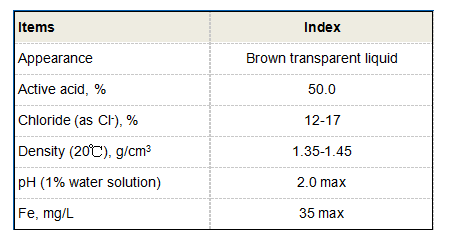Applications of Poly Aluminum Chloride in Various Industries and Water Treatment Processes
Uses of Poly Aluminum Chloride A Multifaceted Coagulant
Poly Aluminum Chloride (PAC) is a widely used chemical compound in various industries, primarily for its effective coagulant properties. As a type of aluminum-based coagulant, PAC helps in the removal of suspended particles from water, making it an essential component in water treatment processes. Its unique chemical structure allows for greater efficiency in coagulation than traditional aluminum sulfate (alum), leading to its increasing application in diverse sectors.
Water Treatment
The most prominent use of Poly Aluminum Chloride is in municipal water treatment facilities. It plays a crucial role in purifying drinking water by aiding in the aggregation of suspended solids, turbidity particles, and microorganisms. Once introduced into water, PAC reacts with the impurities to form larger aggregates or flocs. These flocs can then be easily removed through sedimentation or filtration processes. By ensuring a cleaner water supply, PAC contributes significantly to public health and safety.
Wastewater Treatment
Beyond potable water, PAC is also extensively employed in wastewater treatment plants. It helps in the clarification of wastewater by facilitating the removal of contaminants before the water is released back into the environment. The effectiveness of PAC in treating industrial wastewater is particularly beneficial, as it can address diverse contaminants, including heavy metals and organic materials. In many cases, using PAC results in lower sludge production compared to other coagulants, making it an environmentally friendly option.
Paper Manufacturing
Another significant application of Poly Aluminum Chloride is in the paper and pulp industry. PAC is used as a retention aid during the papermaking process, enhancing the retention of fibers and fillers. This results in improved paper quality while also reducing waste. Furthermore, PAC helps achieve a more uniform distribution of materials within the paper, enhancing its strength and durability. The value-added benefits provided by PAC in paper manufacturing underscore its importance in promoting sustainable practices and economic efficiency.
poly aluminum chloride uses

Textile Industry
The textile industry also benefits from the use of Poly Aluminum Chloride, particularly in dyeing processes. PAC can be used as a mordant, helping to fix dyes to fabrics and improve color fastness. Its ability to enhance dye uptake means that less dye is needed, contributing to cost savings and reducing chemical waste. Moreover, PAC helps in minimizing water pollution associated with dye runoff, aligning with the increasing emphasis on environmentally sustainable textile production.
Pharmaceutical and Cosmetic Applications
In the pharmaceutical and cosmetic industries, Poly Aluminum Chloride is utilized for its antiseptic properties. It is often included in formulations for topical astringents and antiperspirants, where its effectiveness in controlling moisture and bacteria is particularly valuable. By understanding and implementing the benefits of PAC, manufacturers can create products that enhance consumer experience and safety.
Agriculture
Poly Aluminum Chloride also finds applications in agriculture, particularly in soil improvement and irrigation water treatment. It helps in flocculating clay and organic matter in soils, making it easier for air and water to penetrate. This results in enhanced soil health and crop yields. Additionally, PAC can assist in the treatment of irrigation water, ensuring that it is free of harmful contaminants that could affect crop quality.
Conclusion
In conclusion, Poly Aluminum Chloride is a versatile compound with numerous applications across various industries. From water and wastewater treatment to paper manufacturing, textiles, pharmaceuticals, and agriculture, PAC's coagulant properties are instrumental in promoting efficiency, safety, and sustainability. As industries continue to prioritize environmental stewardship and public health, the importance of PAC in achieving these goals cannot be overstated. Its role as a reliable and effective coagulant makes it a key player in the ongoing effort to safeguard both human health and the environment.
-
Pbtc Scale InhibitorPBTC: A Scale Protector for Industrial Water TreatmentNewsAug.05,2025
-
Organic Phosphonate: An Efficient Defender in the Field of Scale InhibitionNewsAug.05,2025
-
Hydrolyzed Polymaleic Anhydride: Green Pioneer in Scale Inhibition FieldNewsAug.05,2025
-
PAPEMP Polyamino Polyether Methylene Phosphonic Acid For SaleNewsAug.05,2025
-
Flocculant Water Treatment: A Pioneer in Purification in the Field of Water TreatmentNewsAug.05,2025
-
Benzyl Isothiazolinone: An Efficient and Broad-Spectrum Antibacterial Protective GuardNewsAug.05,2025





